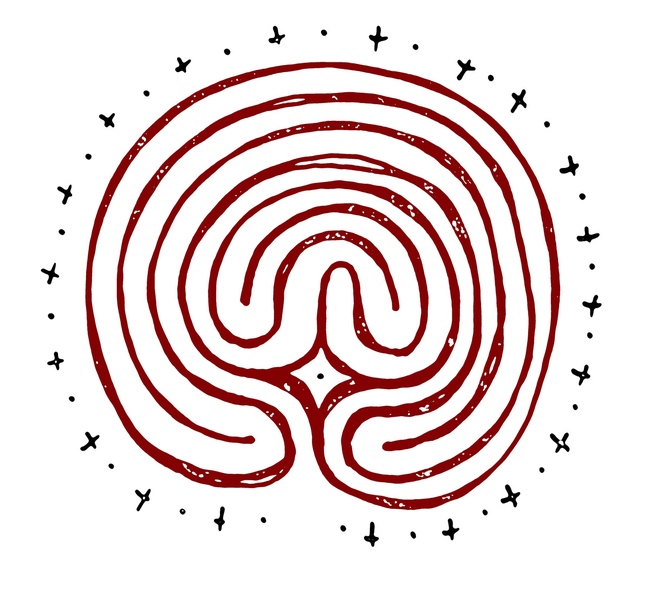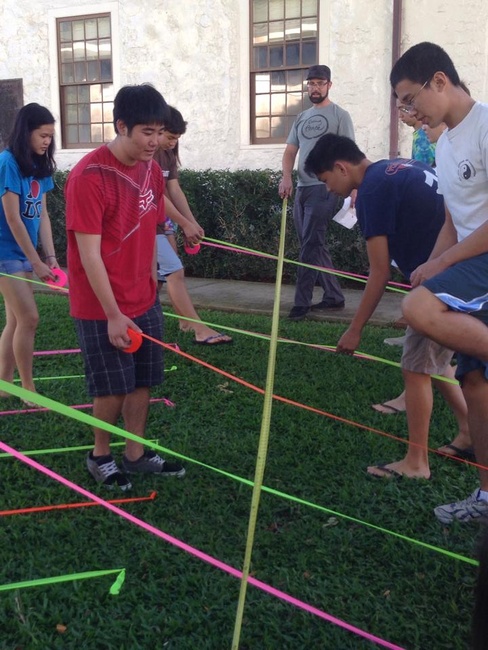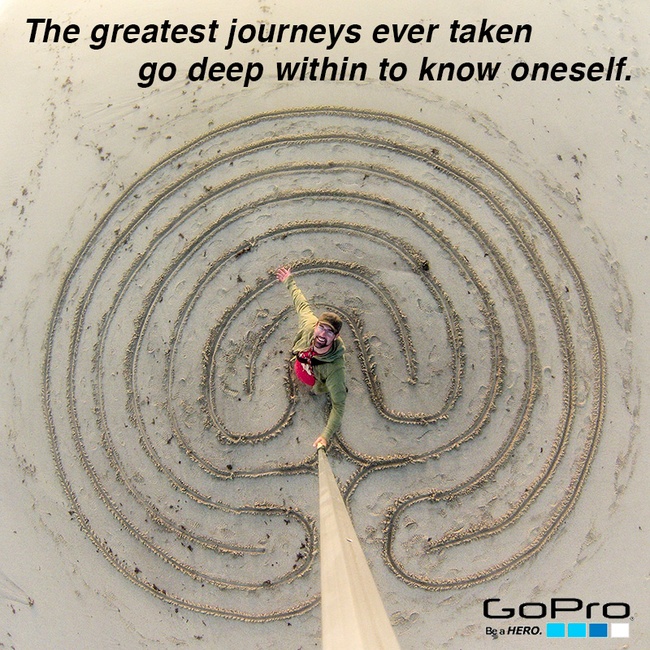Discover Labyrinths: A Journey in Space and Time

Labyrinths are ancient pathways for walking meditation, part of a growing resurgence in the practice of mindfulness as an antidote to our overly busy and connected times. Popping up in schools, hospitals, churches, and public parks across the world, labyrinths create sacred space for personal reflection. The oldest design (the seven circuit classical labyrinth) can be drawn quickly and easily from a seed pattern. After learning and experimenting with historic and experimental designs, a labyrinth can be created with inexpensive materials such as chalk, tape, ribbon, or rocks. It’s fascinating to watch the creation of such spaces, the experiences people walking the path, and the relationships formed between individuals, and their environment over time.

This January I was the artist in residence for two weeks at Punahou School in Hawaii, continually astounded by the response of students to drawing, building and walking labyrinths. From kindergarten to twelfth grade, the designs captured their interest and imagination as we created a variety of installations together throughout campus. I developed and experimented with basic curriculum for presenting, creating, and experiencing labyrinths from many perspectives. The study of labyrinths can relate to almost any subject: History (designs from different cultures & ages), English (the myth of Theseus & Minotaur), Math (use of compass through geometry), Art (creativity in design and installation), and spirituality (mindfulness & meditation). The support of ISKME and OER Commons would allow me to formalize a basic labyrinth curriculum and make building simple labyrinths possible for schools around the world.

GoPro cameras are uniquely suited to documenting and sharing the building and walking of labyrinths due to their wide angle and ease of shooting from high perspectives. As a professional photographer and labyrinth builder, I have experimented with an older model finding the images and agility very compelling. Whether through video or time lapse, the GoPro camera adds another level of self-reflection to the experience. Teachers and students can utilize the GoPro to capture the creation of their labyrinth and the response by others to the new space on campus. Watching the footage can spur conversation about the labyrinth design and walk. Images can help promote the location and availability of the labyrinth on campus. GoPro videos could then be shared with students at others schools to compare challenges, successes, ideas and creativity.
GoPro Labyrinth curriculum overview:

- Definition of Labyrinths (different than mazes) and brief history
- How to Draw and adapt the seven circuit classical labyrinth
- Mindfulness practice in building and walking labyrinths
- Intention: stress reduction? service project? art installation?
- Attention: use of breath, bell, and walking for meditation
- Attitude: experiencing your experience
- Awareness: presence in the moment
- Photography as a tool for Self Reflection
- Time Lapse of building process
- Documenting your walk
- What self-portraits teach us about ourselves
- Building a Labyrinth with simple & inexpensive materials on campus
- Facilitating individual and group walks
- Discussing the experience with videos/photos as prompts
- Sharing images and videos about lessons learned and to inspire others